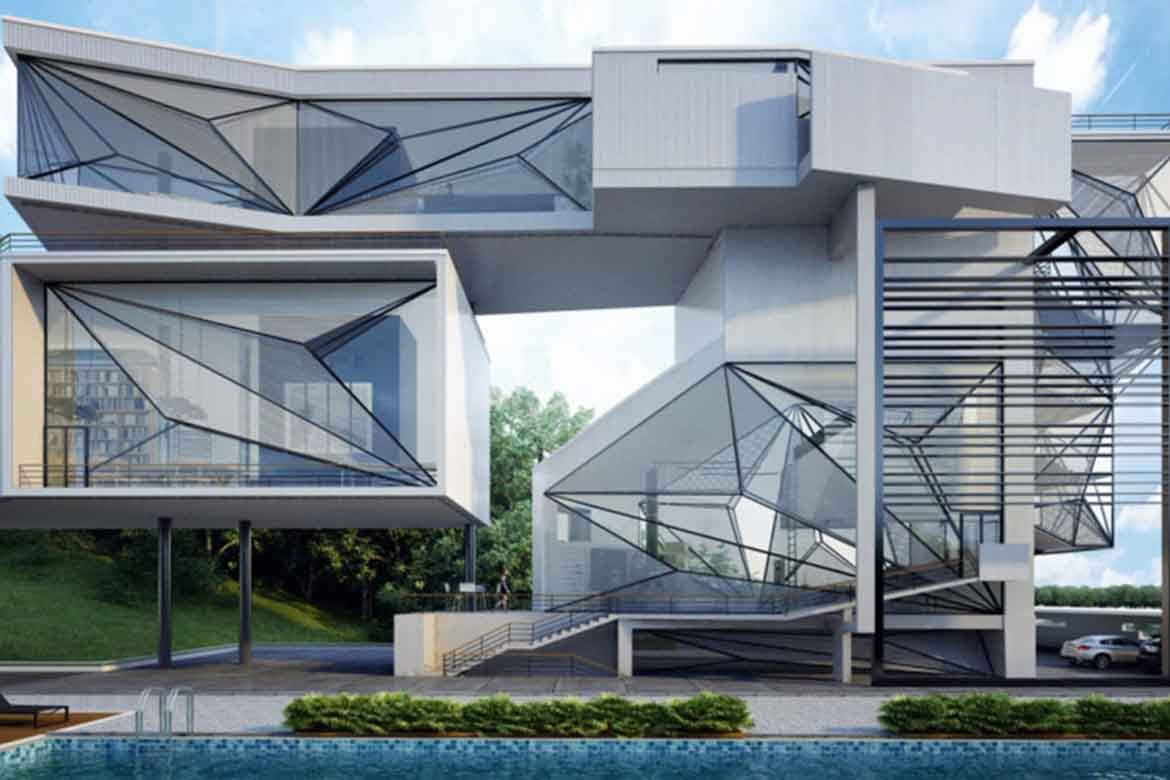Recycled supplies are often more durable than conventional methods and are usually the cheapest option on a small-scale. Currently, this trend is not quite supported by large-scale supply and some recycled construction materials can be quite costly. However, with the rise in awareness of climate change and an incentive to reduce the collective carbon footprint of the construction industry, it is possible that many of the materials listed below will soon become commonplace.
Eventually it is entirely likely that building a house with recycled materials will be the industry standard, rendering conventionally manufactured building materials obsolete. Scientific developments in construction are likely to speed this process, as new eco-materials like Ferrock will soon begin manufacturing on a global scale.
Reusable Building Materials: Top 10
10. Straw Bales

Straw is a waste product and is often discarded or burned at the end of a farming season as it does not provide enough nutrients to become animal feed. Manufacturing a single tonne of concrete generates over 50 times the energy than one of packed straw. Straw bales have an extremely low environmental impact and significantly reduce the carbon footprint of buildings they are used for. It is one of the most cost-effective thermal insulation materials available and they are very resistant to fire due because when compacted, straw bales become almost airtight.
Straw can be used in loadbearing walls, openings (frames; windows, doors etc.), and finishes (usually rendered with a mix of lime, cement and/or sand). However, though straw bale is a cheap green material itself, the practices in its manufacturing require fossil-fueled machinery and high intensity labor practices.
09. Sheep Wool
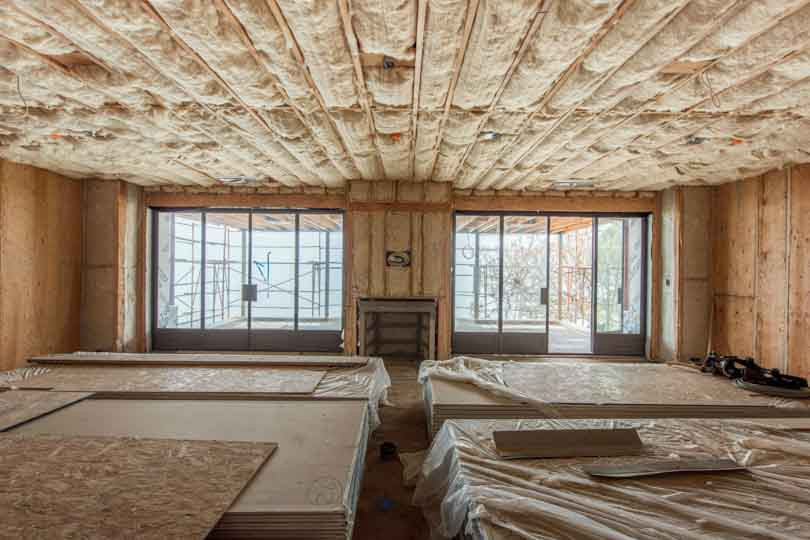
Sheep wool insulation performs equally as well as typical fiberglass, but with many added benefits. Amino acids in wool bond with the molecules of harmful chemicals and actually filter the indoor air. Wool also absorbs moisture, suppresses mold, resists fire and has excellent thermal qualities.
However, it can be expensive and requires an expensive chemical curation process to ensure the before-mentioned benefits which can undermine the goal of keeping materials environmentally friendly. For detailed information on pricing and the science behind wool insulation, have a look at Mountain Made.
08. Rammed Earth
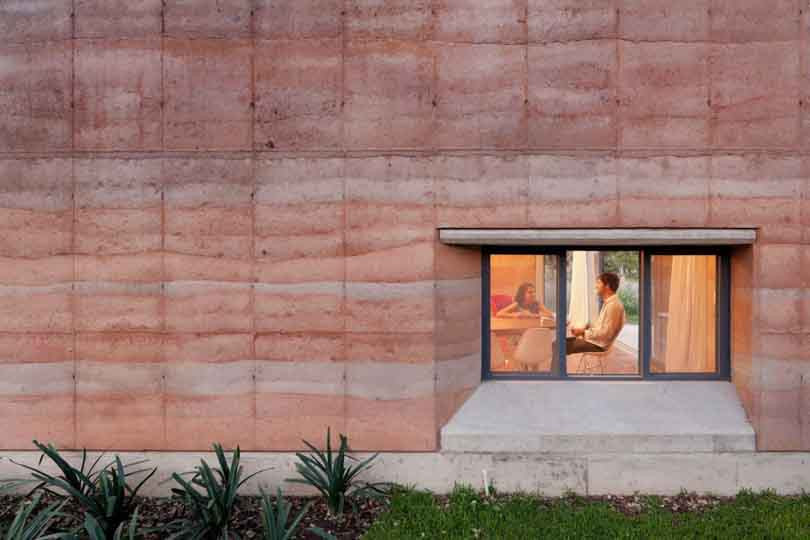
Made from compacted natural materials such as earth, gravel, lime etc., rammed earth can be an affordable pathway to creating a durable structure with strong foundations. Rammed earth provides protection against pests, is completely non-toxic and highly resistant to fire.
A rammed earth building is simple to construct and requires very little equipment – for the DIYer, building a rammed earth structure could be the cheapest possible avenue for construction. However, rammed earth can become expensive on a larger scale if the material being purchased is not sourced locally and contractors have to be hired.
07. Bamboo
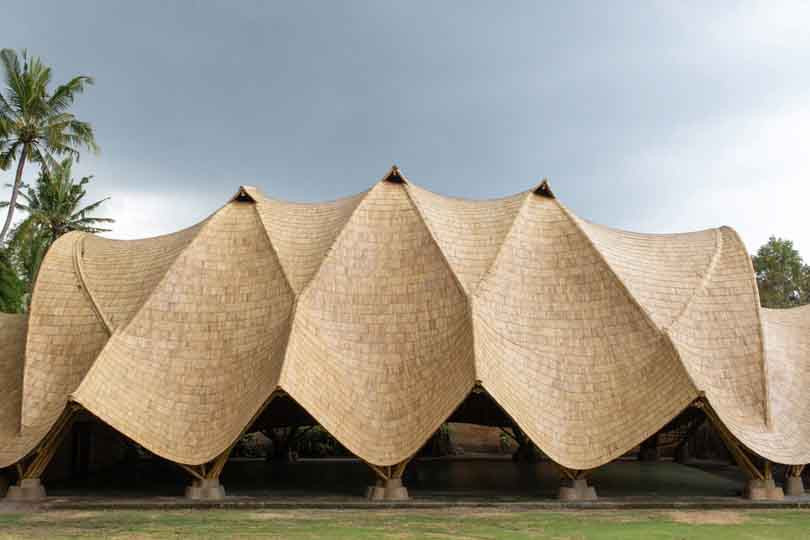
With the fastest growth rate in the plant kingdom, bamboo’s regenerative potential is unprecedented. Given that it is technically a grass, it can be harvested at a much faster rate than trees (just 1-5 years) and does not need to be replanted as regrowth comes from its own root system, making it one of the cheapest and fastest recyclable building materials. It is the superior option for flooring and cabinetry as it toughens over time and has even greater comprehensive strength than concrete or brick.
However, it is susceptible to pests and rot and will deteriorate if left untreated (either naturally or chemically). Shipping concerns are also a problem for bamboo’s green reputation – vast quantities of international shipments certainly increase the overall carbon footprint of bamboo usage.
06. Recycled Plastic
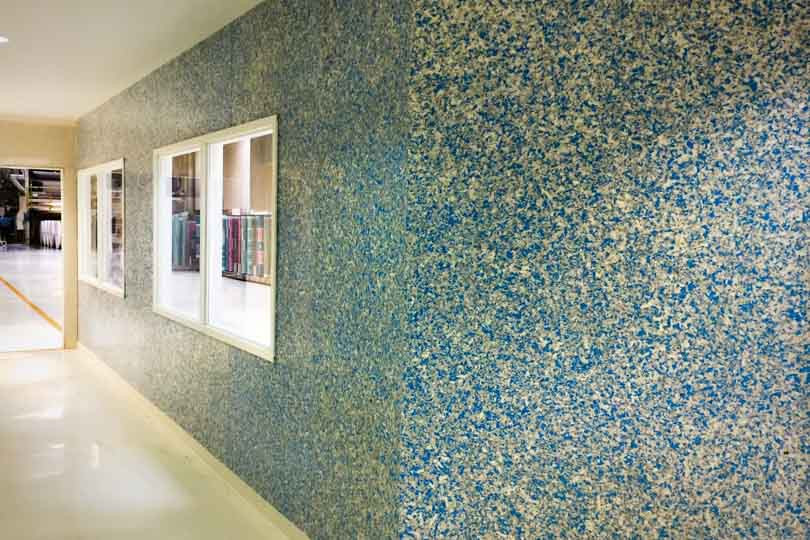
The practice of grinding up recycled plastic (and other waste products) is starting to replace the expensive and pollution-heavy process of mining materials to manufacture concrete. This significantly reduces the carbon footprint of concrete production and makes the entire process more affordable. The potential future of recycled plastic construction is immense and includes recycled plastic roads, bricks, houses, and of course concrete – as well as pipes, roofs, floors etc.
However, as always, recycled plastic comes with drawbacks; the fumes produced while melting down plastic for repurpose will also generate carbon emissions, and can pose a health risk for those who come into contact with it. Plastic is also only generally able to be recycled once, and so using plastic as a reclaimed building material only somewhat delays its eventual return to landfill.
05. Cork

Cork is almost as fast-growing as bamboo and it can be harvested from a living tree, making it one of the most eco-friendly reclaimed building materials on the planet. It is flexible, lightweight and almost completely impervious to moisture, meaning that it has various application in flooring, countertop, acoustic wall coverings, roofs, rigid insulation etc. The most common use of cork currently is in floor tiling, though that may be headed for change with cork becoming a rising trend in exterior design.
A concern for the use of cork is shipping, as it is primarily an export of Portugal and the majority of cork oak trees are found in the Mediterranean. While this does raise the cost of cork somewhat, especially for Australian builders, the environmental benefits are still quite impressive, especially given its versatility in application.
04. Reclaimed Wood
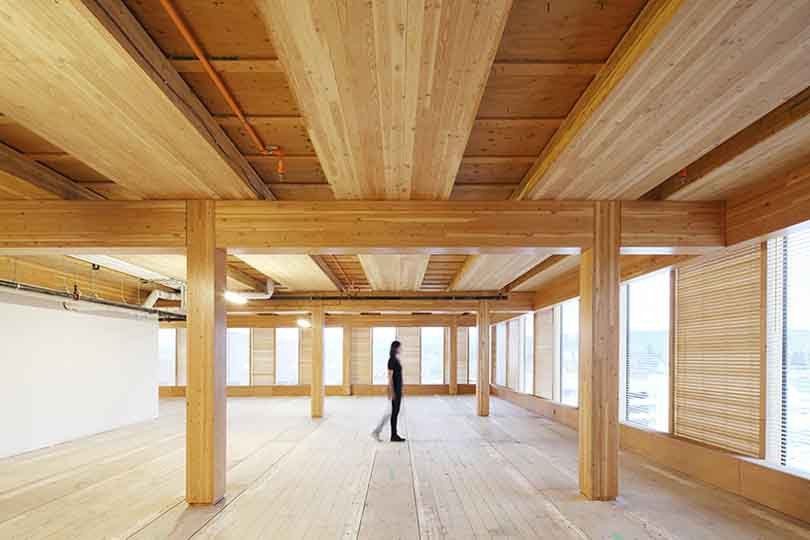
Reclaimed wood is rapidly gaining popularity as an alternative to newly sourced lumber, not just for its environmental benefits but also for the warmth and aesthetic of second hand timber as a design feature. It can be harvested from any manner of abandoned structures such as retired barns, ships, decommissioned buildings, salvage yards, railroads, pallets, etc. It can be used as structural framing, flooring, external feature and cabinetry.
However, the nature of second hand timber means that it may be weakened from years of use and each piece needs to be assessed individually. There are also problems of pests and subtle dangers (e.g. hidden nails) which mean that the timber is likely to require a process of treatment and decontamination. For more insight into the potential of recycled materials in design, see here.
03. Reclaimed Steel

An estimated 25% of all steel used in construction is recycled. This still leaves huge potential for the future of reclaimed building materials in Australia.
Steel is more durable than timber and fortifies structures against climatic concerns such as winds or earthquakes, as well as resistant to pests/water/fire. Steel is best suited for roofing and structural support as there is no danger of warping. Steel has been used to create multiple carbon neutral buildings worldwide, and it is 100% recyclable.
Reclaiming steel drastically reduces the amount of newly manufactured steel (in terms of mining, heating and shaping) and thus greatly reduces the carbon footprint of the construction project. Recycled steel is also less expensive to obtain and purchase. There are, of course, challenges to using recycled steel; particularly, supply can be limited and often infrequent.
02. Precast Concrete Slabs

Precast concrete slabs require less energy in the manufacturing stage and are therefore more sustainable than conventional concrete. They can be used for walls, exteriors, roofing and floors as they remain durable throughout all weather conditions. Precast Concrete is also a cost-sensitive method of temperature control and the process of its curation avoids the structural faults that may occur within concrete cured under the unpredictable conditions of a construction site. A structure made from precast concrete slabs can be easily deconstructed for further reuse and slabs have a reliable supply flow.
One disadvantage to precast concrete is that it requires significant expertise to use in design, as changes are difficult to make once the casting is complete and every panel variation requires a unique design approach. It can also be more expensive than other materials.
01. Ferrock
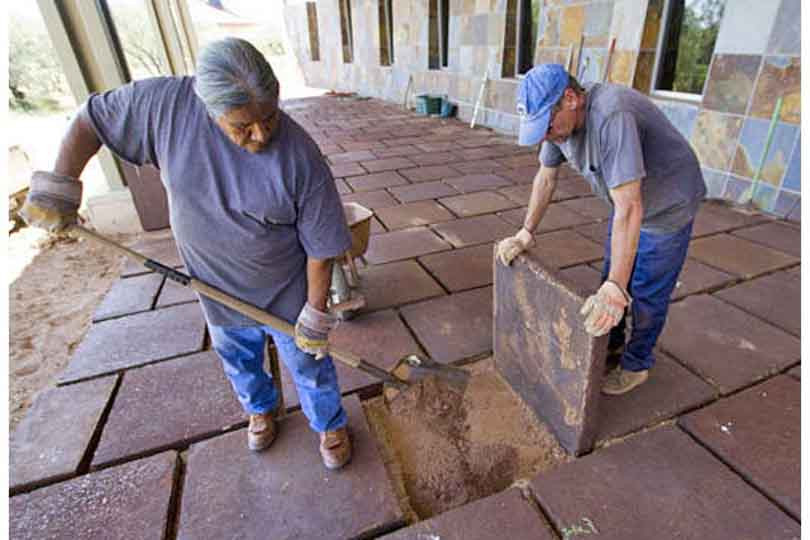
Ferrock is a new material created primarily from the iron-rich ferrous rock mixed with recycled materials such as waste steel dust or components of ground up glass. Like concrete, Ferrock is so strong that it cannot melt back into liquid form. Ferrock is actually as much as five times stronger than conventional concrete and is even more flexible, making it more likely to resist earthquake damage. On top of that, the manufacturing process of Ferrock is carbon negative, as the material actually absorbs and binds carbon dioxide.
Given that Ferrock is so new on the construction scene, it is difficult to predict whether it will fade into obscurity or become the next new major construction trend. It is relatively cheap to produce now, but it is fairly likely that companies will begin charging a premium for their steel waste if it becomes evident that the waste is valuable. At the moment, Ferrock is not the most feasible recycled material for individual projects. That will, hopefully, be subject to change in the future.
Reusable Building Products: Top 3
03. Recycled Weatherboards
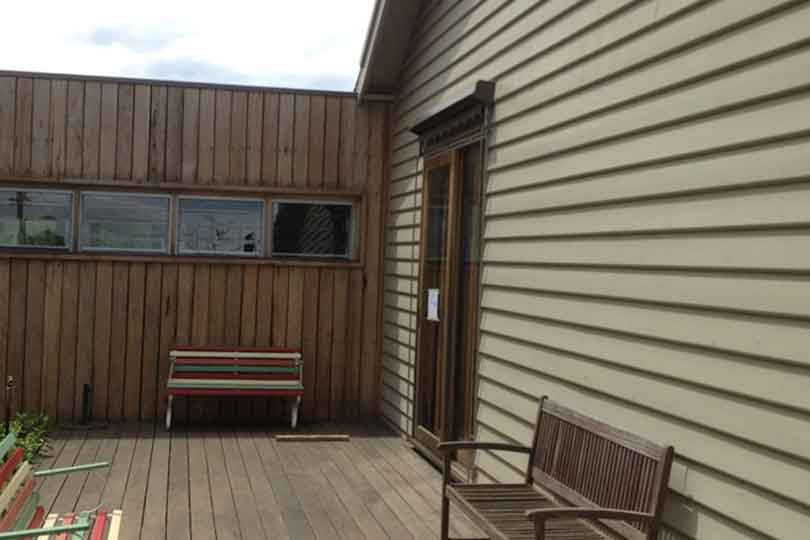
Using recycled weatherboards made from reclaimed wood is an environmentally friendly alternative to brick. They are easily available and usually low cost, with multiple companies operating out of Sydney, Melbourne, Perth and Brisbane. They are easy to repair and install, their insulation capabilities are excellent.
02. Recycled Plastic Bricks
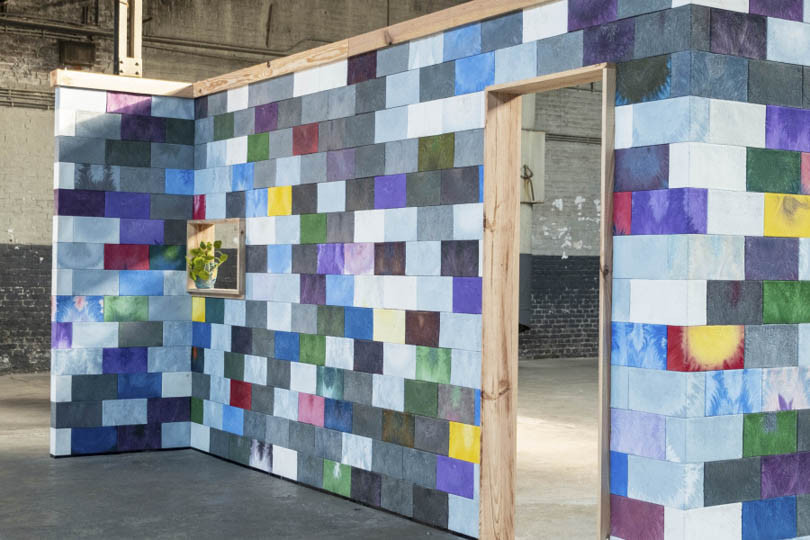
Recycled plastic bricks are an efficient solution to the problem of excessive waste now challenging contemporary society. They are building blocks made from waste plastic which would otherwise end up in landfill or polluting the natural landscape.
If recycled plastic bricks were to replace metal, it would drastically decrease the carbon footprint of the construction industry as the manufacturing of metal building materials emits large amounts of carbon and greenhouse gases. They are also significantly cheaper than any other recyclable material given that they are made from low-value common plastic waste.
Note that a recycled plastic brick is not the same as a bottle brick; bottle bricks are empty plastic bottles filled with tightly packed inorganic waste which are then compressed like bricks. With recycled plastic bottles, there is no outer bottle filling and the shape can be molded by the manufacturer.
01. Recycled Concrete Blocks
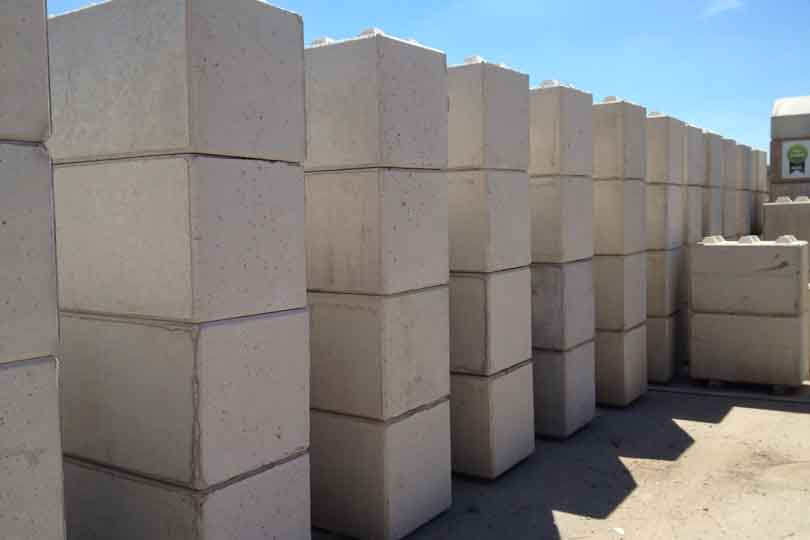
Since concrete cannot be returned to a liquid state, recycled concrete blocks are made using industrial crushing equipment to break up concrete which is then treated and reused. Recycling concrete helps to limit new concrete production, reducing greenhouse emissions, and reduces the concrete waste overcrowding landfill. Recycled concrete blocks can be made from multiple types of concrete structures such as foundations, curbs, sidewalks, and slabs.

